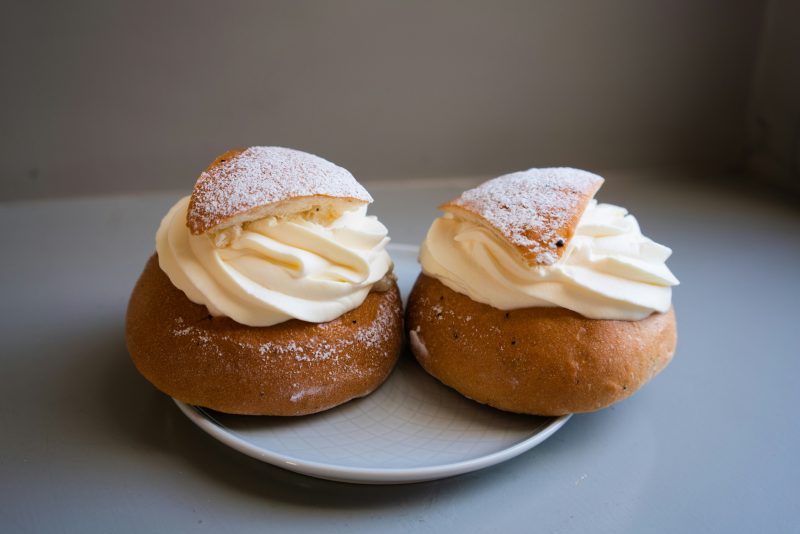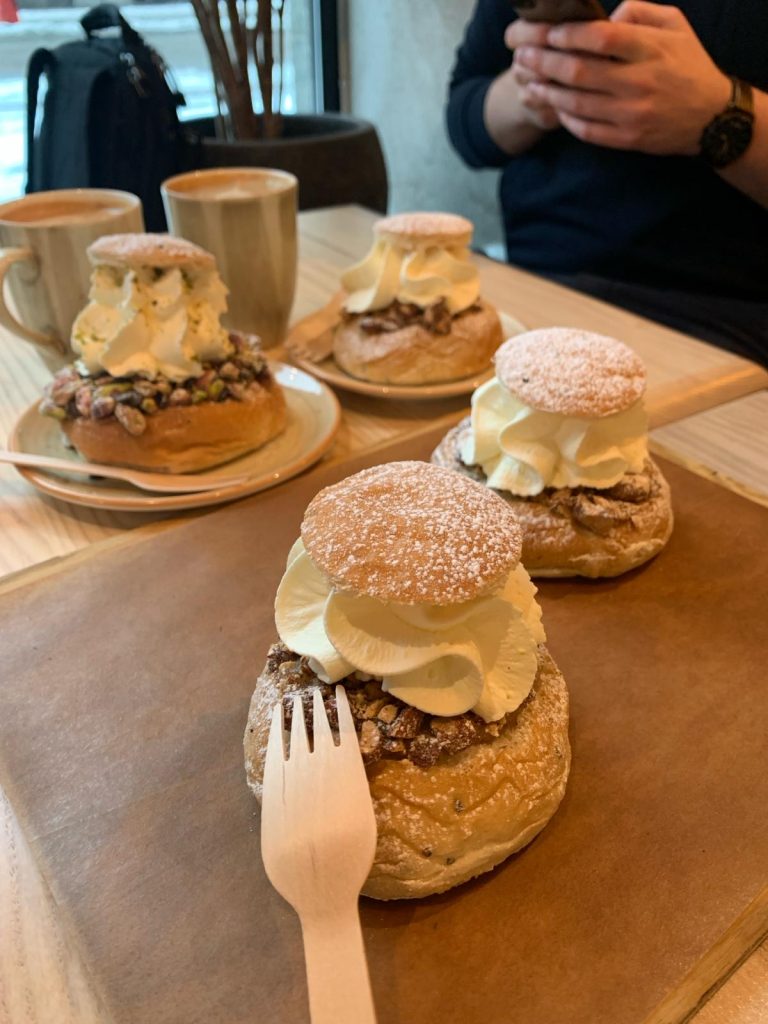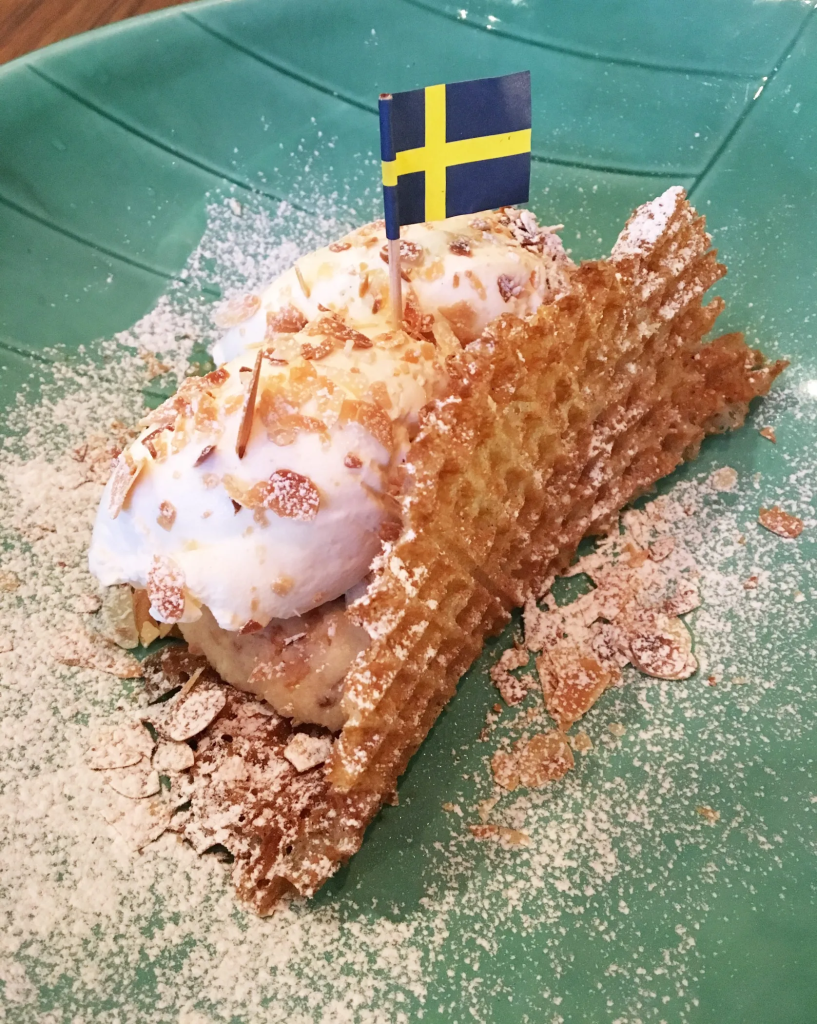
Diving into the Swedish festival “Fettisdagen” and experiencing the essence of Swedish creativity
Hello, dear readers! It’s a pleasure to reconnect with you all. In my previous blog, I highlighted the commencement of the lunar new year in February. However, there’s another noteworthy Swedish festival that occurs in February – “Fettisdagen” (Fat Tuesday). This is a day celebrated with a myriad of semlor (the plural form of the semla bun). It’s no overstatement to say that the semla is the crown jewel of Swedish pastries, especially during Fettisdagen. From my perspective, semlor don’t just symbolize Fettisdagen; they also embody Scandinavian creativity and innovation, as evidenced by the myriad of semla variations concocted by cafes, restaurants, and fast-food outlets in Stockholm.

Fettisdagen and the “traditional” Semla
For those unfamiliar with Fettisdagen, it has its roots in Catholic tradition as the final day before the forty-day fast leading up to Easter. Historically, people would indulge in seven meals on this day to brace themselves for the forthcoming fast. A typical meal in the 1800s on Fettisdagen included a high-fat Tuesday soup and pork sausage – a surprising revelation. The association of semlor with Fettisdagen is a relatively recent phenomenon, emerging only in the 20th century.
Referring to Semla as “traditional” might not be entirely precise, considering its relatively recent addition to our tables in the 20th century. However, ask any Swede to describe a traditional semla, and the unanimous response would be, “It’s a sweet wheat bun filled with whipped cream and almond paste, topped with a light dusting of icing sugar.”
The semla in Stockholm gets a makeover
Semlor in Stockholm have undergone numerous transformations, thanks to the limitless imagination of bakers and chefs. From the introduction of new flavors such as vanilla, chocolate, and blueberry, to adaptations for special dietary needs like gluten-free and lactose-free options, the evolution of semlor is a testament to Swedish ingenuity.
The popularity of semlor has surged, with one fast-food chain transforming the traditionally hamburger-like pastry into an actual hamburger complete with patties. Semlor have been deconstructed and reimagined as wraps, tacos, hotdogs, nachos, cakes, pizzas, éclairs, and more. There are even drinkable versions like semla porridge, semla milkshake, and semla beer – delighting some while bewildering others. I’m thoroughly impressed by the creativity and innovation exhibited by the Swedish community.

The essence of Swedish creativity
Swedish creativity and innovation never cease to amaze me. Creativity and innovation are cornerstones of Swedish culture. In 2023, Sweden was ranked second in the global innovation index. Creativity is a driving force behind the growth of Sweden’s GDP, evidenced by Stockholm’s ranking, second only to Silicon Valley, in terms of unicorns (startups valued at over $1 billion) per capita, with approximately 0.8 per 100,000 inhabitants in 2021. KI Innovation provides a perfect business incubator environment for KI students with entrepreneurial aspirations, offering support and guidance to transform research-based ideas and knowledge into contributions towards a healthier future for all.
KI Innovation offers an array of services to interested parties, including education, professional networks, financing, entrepreneurial expertise, and incubation opportunities, all based on research conducted at Karolinska Institutet. In my upcoming blogs, I’ll delve into the daily workings of KI Innovation and explore their incubation process with their business coach, Andrea Lundquist. We’ll see firsthand how KI Innovation supports KI students in translating their professional skills in life science and health into viable business ideas. If this intrigues you, make sure to stay tuned for my April blog post.

As we wrap up our exploration of Fettisdagen and the innovative spirit of Sweden, it’s clear that the fusion of tradition with creativity is a powerful force in shaping Swedish culture. From the reinvention of the humble semla to the global recognition of Swedish innovation, there’s a lesson in the value of embracing change while honoring the past. As we look forward to uncovering the secrets behind KI Innovation’s success in nurturing future entrepreneurs, let’s take inspiration from Sweden’s approach to innovation and creativity. May we all be encouraged to think outside the box and explore new horizons, whether in our kitchens with a semla-inspired creation or in our professional endeavors. Join me next time as we continue to celebrate the unique blend of tradition and innovation that makes Swedish culture so fascinating.

Martin - Health Informatics
I am Martin, 27, currently studying Health Informatics at Karolinska Institutet and Stockholm University. I’m passionate about using data science to improve human well-being. Discovering this programme was a pivotal moment, and I've found it to be one of my best decisions. The programme is enriching my network and perspectives by hosting talks with alumni, government representatives, and startups. An interesting fact about me is that I once aspired to be a curator and artist specializing in Chinese art.

0 comments